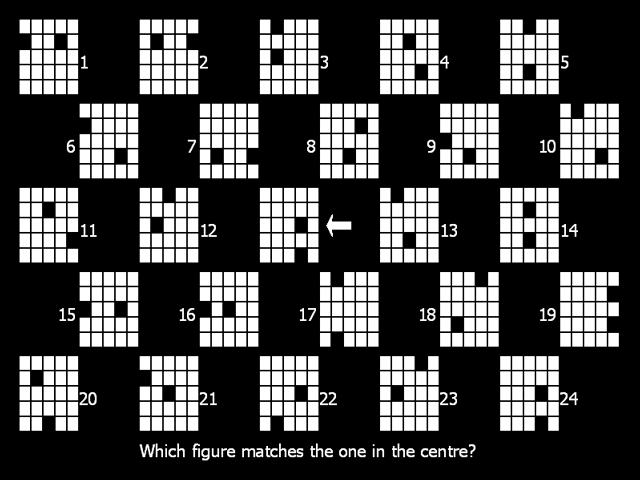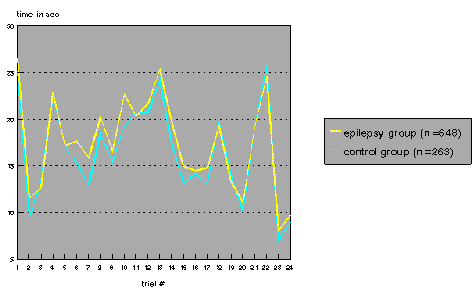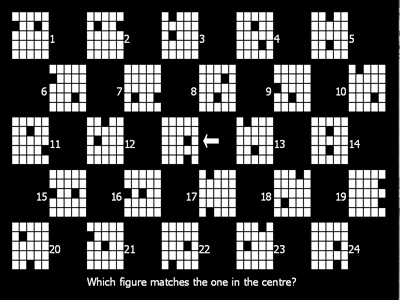This test has been described by Goldstein et al. in 1973 as a successful instrument for discriminating brain damage from normal and psychiatric populations. DeMita & Johnson developed a computerized version of the same task for the DEC LSI-11/03 computer. Our task is an adaptation of Goldstein’s test. The task consists of finding a grid pattern out of 24 which matches the one in the centre of the screen. Grid patterns are displayed in a checkerboard fashion and are numbered from 1 to 24. The target pattern is marked by an arrow on the right side and is selected by typing the correct number from the keyboard. 24 Different patterns are presented. After 12 presentations the surrounding grids change. The testee is asked to react as fast as possible.

CVST
Results show accuracy and speed of responses and are evaluated within the context of visual (complex) information processing and perceptual-mental strategies. An important variable appears to be the average response time. These average scores were appro. 17 seconds in a heterogeneous epilepsy group and 15.8 seconds for a normal control group.
Searching Times

The profile of the 24 responses of the epilepsy group resembled the pattern for the control group to a great extent, except for the slowing of latency. This suggests a similar strategy in solving this task, overall mental slowing being characteristic of the ‘epilepsy’ group. The range of reaction time for each of the (24) trials within this task was 10-30 seconds for the epilepsy group and 7-22 seconds for the control group.
A second version exists with 10 grid patterns. This version is meant for the younger children and elderly people who have difficulties with the extended version.

CVST 10 patterns
